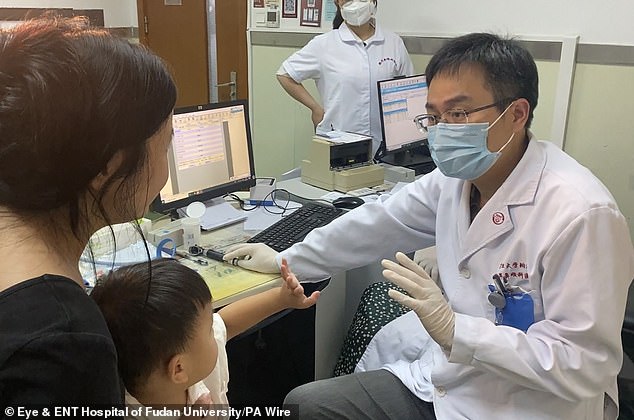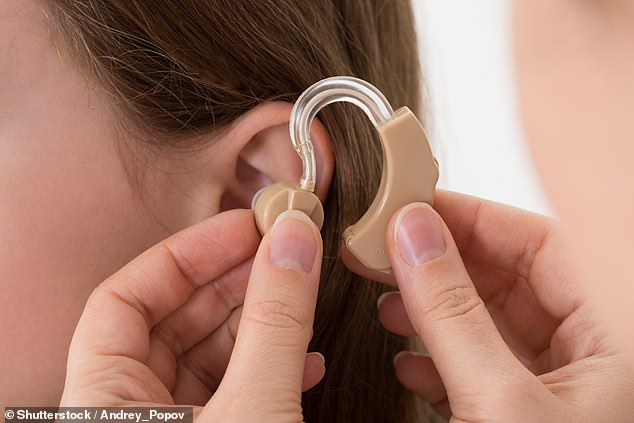Two kids who have been born deaf can now take heed to music and even dance to it after a groundbreaking gene remedy.
This therapy, given as an injection into the ear, replaces the defective DNA that causes inherited deafness known as DFNB9.
The researchers hope an identical strategy might assist different congenital instances of deafness — which account for 60 p.c of the 430 million instances worldwide.
On the earth's first gene-therapy trial, 5 kids in China – two ladies and three boys, throughout three years outdated – got the flexibility to listen to in each ears. All 5 kids have been in a position to hear and communicate phrases and will additionally establish the place sounds have been coming from.

This therapy, given as an injection into the ear, works by changing defective DNA that causes a kind of inherited deafness often called DFNB9. Dr Yilai Xu of Fudan College Eye and ENT Hospital examines a younger affected person

The DFNB9 sort of deafness is brought on by a failure to supply a protein known as otoferlin
However two confirmed extra superior enhancements and have been even in a position to answer music, which incorporates extra complicated sound alerts.
The newest outcomes, printed in Nature Drugs, construct on work the crew carried out two years in the past, once they handled a bunch of kids with a single ear.
After the gene remedy, the younger individuals went from being severely deaf to having delicate to reasonable listening to loss within the handled ear. However the crew stated giving the remedy to each ears produced further advantages in comparison with the earlier trial, together with with the ability to hear even in noisy environments.
The DFNB9 sort of deafness is brought on by a failure within the manufacturing of a protein known as otoferlin, which is crucial for the transmission of sound alerts from the ear to the mind. Presently, cochlear implants are the one efficient therapy for sufferers.
For the check, researchers on the Eye and ENT Hospital of Fudan College in Shanghai used a modified model of adeno-associated virus (AAV), which isn’t dangerous to people, to ship the gene.

After gene remedy, kids's listening to issues ranged from extreme deafness to delicate to reasonable listening to loss (photograph)
Professor Zheng-Yi Chen, lead creator of the research, stated: 'The outcomes of those research are stunning.
'We’re seeing dramatic enhancements within the listening to capacity of handled kids, and the brand new research exhibits that when gene remedy is given to each ears it has further advantages, together with improved capacity to listen to speech, even in noisy environments.'
Professor Chen, who can also be affiliate professor of otolaryngology (head and neck surgical procedure) at Harvard Medical College within the US, stated: 'Our final objective is to assist individuals regain their listening to, no matter the reason for their listening to loss.'
The incident comes six months after a lady in Britain was given an identical gene remedy in a trial carried out at Addenbrooke's Hospital in Cambridge. Opal Sandy, 18 months outdated from Oxfordshire, had the therapy in her proper ear, whereas a cochlear implant was fitted in her left ear.
After just a few weeks she turned in a position to hear loud noises, reminiscent of clapping, and may now hear tender noises, reminiscent of whispers, and is starting to say phrases reminiscent of 'mama', 'dada' and 'uh oh'.
'The outcomes are superb'


